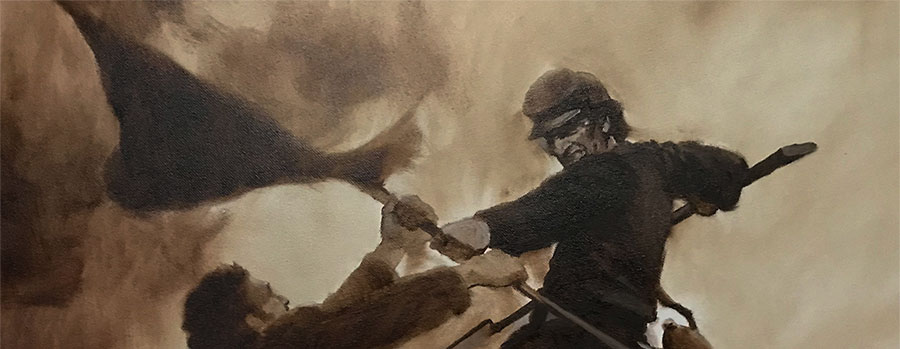 Medal of Honor for capturing the enemy flag
Medal of Honor for capturing the enemy flag
As I was doing my research on the Civil War Medal of Honor recipients from Ohio, I can’t help but notice that many of the citations read “Capture of Flag”. I wanted to look into this a little deeper as it seemed such a small action as capturing the flag didn’t seem worthy of such an honor.
In the American Civil War, flags were used as a guide or rallying point for soldiers in battle. A battlefield can a very loud place, making it extremely difficult or even impossible to hear bugle calls or vocal commands. A visual rallying point was essential, and soldiers were trained to follow the flag. So it would be natural to assume that there would always be a good amount of men near the flag, and thus harder to capture. Also, only the most courageous of men carried the colors, as he would have to be prominently in view of not only his comrades, but also the enemy. Therefore, the carrier of the flag presents an ideal target in full view of the opposing army. More importantly, color bearers had to face the enemy and never break and run in retreat, or the entire regiment might follow. So capturing the flag meant confronting a very determined, brave soldier who is determined to protect the colors at all costs.
From an artist’s perspective, the attempted capture of the enemies colors then becomes a great subject for a painting. I am always interested in the moment when the bodies are in full motion, when the tension is at it’s highest. Trying to seize the colors of the enemy then becomes the epic battle within a battle. A savage combat between a courageous flag bearer valiantly trying to hold on to an object of great reverence, and a equally brave and daring opponent who is trying to add to his own regiment’s glory.
For further reading, I found the following:
Why Were Flags So Important in the Civil War?